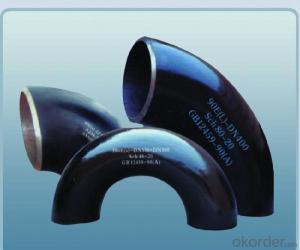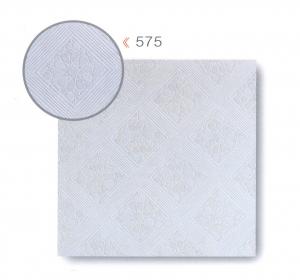303 Stainless Steel Properties
303 Stainless Steel Properties Related Searches
Best Paint For Stainless Steel Blanket Insulation For Steel Buildings Primer For Galvanized Steel Foam Filter For Stainless Steel H S Code For Stainless Steel Surface Grinding Wheels For Stainless Steel Surface Grinding Wheels For Hardened Steel Hole Saw For Stainless Steel Paint For Stainless Steel Stainless Steel For BbqHot Searches
Steel Mesh Panels For Sale Price For Stainless Steel Scrap Scrap Price For Stainless Steel Price For Stainless Steel Stainless Steel Tank For Sale Stainless Steel Sheets For Sale Cheap High Tea Sets For Sale Stainless Steel Tanks For Sale Stainless Steel For Sale High Density Fiberboard For Sale Solar Hot Water Collectors For Sale Scaffolding For Sale In Uae Scaffolding For Sale In Ireland Scaffolding For Sale In Houston Type Of Inverter For Solar Price Of Shipping Containers For Sale Types Of Inverter For Solar Stock Price For Aluminum Used Solar Inverter For Sale Steel Mesh Panels For Sale303 Stainless Steel Properties Supplier & Manufacturer from China
Okorder.com is a professional 303 Stainless Steel Properties supplier & manufacturer, offers integrated one-stop services including real-time quoting and online cargo tracking. We are funded by CNBM Group, a Fortune 500 enterprise and the largest 303 Stainless Steel Properties firm in China.Hot Products
FAQ
- Stainless steel pipes can be paired with various types of fittings, depending on the specific needs and application. Here are some of the most commonly used fittings: 1. Compression fittings: These fittings create a tight, leak-proof connection by compressing a ferrule onto the pipe. They work well with both rigid and flexible stainless steel pipes and are easy to install. 2. Threaded fittings: Known as screwed fittings, these have female threads that can be screwed onto the male threads of the pipe. They are commonly used in low-pressure situations and can be easily installed or removed. 3. Butt weld fittings: These fittings are used to make a permanent, welded connection between two stainless steel pipes. The pipes need to be beveled to create a V-shaped groove, and they are typically used in high-pressure or high-temperature settings. 4. Flange fittings: Flanges are utilized to connect two stainless steel pipes or connect a pipe to a valve, pump, or other equipment. They provide a strong and leak-proof connection and can be bolted or welded onto the pipe. 5. Push-to-connect fittings: These fittings offer a quick and tool-free connection. They use a push-in mechanism to secure the pipe and are commonly used in plumbing and air compression systems. 6. Camlock fittings: Camlock fittings enable rapid connection and disconnection of hoses and pipes. They have a lever or cam mechanism that locks the fitting into place, ensuring a secure connection. These fittings are often used in industrial settings where frequent connections and disconnections are necessary. Ultimately, the choice of fitting depends on factors such as the application, pressure requirements, and ease of installation. It is crucial to select the appropriate fitting to guarantee a reliable and long-lasting connection for stainless steel pipes.
- The heat transfer coefficient of stainless steel pipes can be determined through a variety of methods, including empirical correlations and theoretical calculations. One popular empirical correlation is the Dittus-Boelter equation, which establishes a relationship between the heat transfer coefficient, Reynolds number, and Prandtl number. The equation is as follows: Nu = 0.023 * Re^0.8 * Pr^0.4 In this equation, Nu represents the Nusselt number, Re represents the Reynolds number, and Pr represents the Prandtl number. The Nusselt number is a dimensionless quantity that signifies the ratio of convective to conductive heat transfer. To calculate the Reynolds number, the following formula is used: Re = (ρ * v * D) / μ Here, ρ denotes the fluid's density, v represents the fluid's velocity, D is the hydraulic diameter of the pipe, and μ represents the fluid's dynamic viscosity. The Prandtl number can be determined using the equation: Pr = μ * Cp / k In this equation, Cp stands for the specific heat capacity of the fluid, while k represents the fluid's thermal conductivity. Once the Reynolds and Prandtl numbers are determined, they can be substituted into the Dittus-Boelter equation to calculate the Nusselt number. Finally, the heat transfer coefficient can be obtained by multiplying the Nusselt number by the fluid's thermal conductivity and dividing it by the hydraulic diameter of the pipe: h = (Nu * k) / D In this equation, h represents the heat transfer coefficient. It is essential to note that these calculations are based on assumptions and empirical correlations. Actual heat transfer coefficients may vary due to factors such as pipe roughness, fluid properties, and flow conditions. Therefore, it is advised to consult relevant heat transfer literature or conduct experimental studies for more precise results.
- The typical wall thickness for stainless steel pipes can vary depending on the application and specific requirements. However, in general, stainless steel pipes are available in a wide range of wall thicknesses. For most standard applications, such as plumbing or industrial use, the typical wall thickness for stainless steel pipes can range from Schedule 5S (0.049 inches or 1.24 mm) to Schedule 80S (0.218 inches or 5.54 mm). It is important to note that for specialized applications or projects with specific requirements, the wall thickness can be customized accordingly. Overall, the selection of the appropriate wall thickness for stainless steel pipes should be based on factors such as the intended use, pressure requirements, and structural considerations.
- The main difference between seamless and submerged arc welded stainless steel pipes lies in the manufacturing process and the resulting characteristics of the pipes. Seamless stainless steel pipes are made by piercing a solid cylindrical billet and then rolling it to form a hollow tube. This process ensures a smooth and uniform pipe with no welded seams. As a result, seamless pipes are generally considered to have higher strength and pressure resistance compared to welded pipes. They also have a more aesthetically pleasing appearance due to the absence of visible welds. On the other hand, submerged arc welded stainless steel pipes are manufactured by welding a coiled plate or strip of stainless steel using a submerged arc welding process. This involves feeding the plate or strip through a series of rollers while simultaneously welding the edges together using an electric arc submerged in a flux material. The flux protects the weld from impurities and helps maintain the integrity of the joint. The use of this welding method allows for the production of large diameter pipes that are well-suited for high-pressure applications. However, the welding process may leave visible weld seams on the surface of the pipe, which can affect its appearance and may require additional finishing processes. In terms of characteristics, seamless pipes are generally known for their superior strength, corrosion resistance, and ability to withstand high pressure and temperature. They are commonly used in industries such as oil and gas, chemical, and petrochemical, where these properties are crucial. Submerged arc welded pipes, on the other hand, are more cost-effective and are often used in applications that require large diameter pipes, such as in water transmission, structural support, and infrastructure projects. In summary, the main differences between seamless and submerged arc welded stainless steel pipes lie in the manufacturing process, resulting appearance, and specific applications. Seamless pipes are produced without any welded seams, offering higher strength and pressure resistance, while submerged arc welded pipes are cost-effective and suitable for large diameter applications.
- Yes, stainless steel pipes can be used for food storage tanks. Stainless steel is a highly durable and corrosion-resistant material that is safe for storing food and beverages. It is non-reactive and does not leach any harmful substances into the stored products, making it an ideal choice for food storage tanks.
- The impact strength of stainless steel pipes is generally high, as stainless steel is known for its toughness and resistance to impact and deformation. However, the exact impact strength can vary depending on the specific grade and manufacturing process of the stainless steel used in the pipes.
- Yes, stainless steel pipes can be used for drinking water supply. Stainless steel is a highly durable and corrosion-resistant material, making it a suitable choice for transporting drinking water safely and hygienically. Unlike other materials, stainless steel pipes do not leach harmful chemicals or contaminants into the water, maintaining its quality and purity. Additionally, stainless steel pipes are resistant to bacterial growth, which further ensures the safety of the drinking water.













































